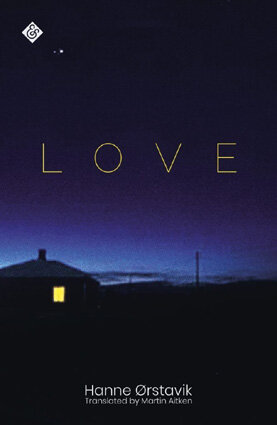There’s an aching feeling of loneliness as well as a foreboding sense of danger throughout Hanne Ørstavik’s short, razor-sharp novel “Love”. The story concerns Vibeke and her son Jon who have recently moved to small town in the north of Norway. The narrative continuously switches focus between the mother and son’s points of view without any line breaks or indications that it’s changing. This produces the curious effect of a synchronicity and connection between the two so the border between them appears to blur. But, as the novel continues, it becomes apparent there’s a dangerous disconnect as they embark on independent journeys deep into the night meeting strangers and driving separately through the freezing near-empty landscape. Jon is about to turn nine years old and he’s expecting his mother to bake him a cake to celebrate, but her mind is decidedly elsewhere. Although there’s little plot, a quiet tension hums throughout each section making this a deeply meditative, haunting and curiously mesmerising novel.
I was reminded of Virginia Woolf’s novel “The Waves” when reading this book because there’s an intense interiority to both the mother and son’s sections – as well as a sense of ceaseless flow between them. However, there’s a pared down style to Ørstavik’s prose in her use of many straight-forward declarative sentences which is very different from Woolf’s more poetically charged writing. Nevertheless, I was struck by certain lines such as when Vibeke declares to herself “I’ll sheathe us both in speechless intimacy, until we’re ready for the abruptness of words.” This is the sort of subconscious speech similar to something Rhoda would say in Woolf’s novel.
Even though this novel mostly isn’t narrated in the first person, it feels like we’re so deeply embedded in the consciousness of each character as we’re aware of their fleeting sensory experiences. There are numerous succinctly accurate observations such as “He can feel in his nose when he breathes in how cold it is.” Anyone who has been in an extremely cold climate knows this feeling. I also felt a deep sympathy for the characters especially when Vibeke feels drawn to the solitude of reading: “She feels the lure of sitting with a good book, a big thick one of the kind that leave an impression stronger and realer than life itself.” It’s interesting how the novel plays out the tension each character feels of wanting to be alone but also desiring to make a meaningful connection with some unknown person.
Ørstavik also has a masterful way of depicting how reality is mixed with her characters’ imaginations. Jon frequently pictures himself engaged in some sort of adventurous battle or running from a phantasmagorical threat. Meanwhile, Vibeke continuously tests the romantic boundaries with a man named Tom she meets at a fun fair – but only in her mind. I found it so interesting coming to this novel after reading Andre Aciman’s recent “Find Me” which also presents several meaningful encounters with strangers. But in “Love” these meetings felt much more real to me because the bulk of the interactions which take place here are filled with awkward or uncertain silence. In this way the novel powerfully shows the singular way we navigate through the world and continuously negotiate our relationships with other people. It also captures an eerie sense of estrangement from those we’re supposed to be closest to.










